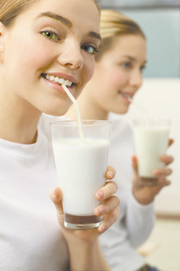Calcium saves bones during weight loss
Overweight adolescents wanting to lose weight should not neglect calcium-rich foods such as dairy, a world leader in bone research says.
 Connie Weaver and a team of researchers from Purdue University in the US studied calcium metabolism throughout people's life cycle, particularly during periods of high demand such as adolescence.
Connie Weaver and a team of researchers from Purdue University in the US studied calcium metabolism throughout people's life cycle, particularly during periods of high demand such as adolescence.
The team is also researching the relationship between calcium intake and body fat maintenance in adolescents.
Professor Weaver, who heads Purdue University's food and nutrition department, will present her work at the annual scientific meeting of the Nutrition Society of Australia in Adelaide on December 2.
She will discuss recent research among overweight and obese adolescents which found that increased weight (body fat) increases the need for calcium for healthy bones.
Because of the narrow window of time for achieving maximum bone density, Prof Weaver stressed how important it was for adolescents to maintain the recommended dairy food intake, even during low calorie weight loss diets, to protect bone health.
"We know for certain that calcium intake during the adolescent years can shape bone health for the remainder of a person's life."
"Most teenage children would benefit from the consumption of 3-4 servings of dairy products daily to protect bone health and to help manage healthy body weight," said Prof Weaver.
Dairy Australia dietitian Glenys Kerrins said it appeared that a large proportion of Australian boys and girls were not getting enough calcium in their diets.
In a national dietary survey conducted in 2007, only 18% of 14–16 year old girls consumed more than the estimated average requirement for this age group.
"The recent National Children's Nutrition Survey1 has shown this was particularly common among adolescent girls. Unfortunately, girls preoccupied with body shape might be more likely to exclude nutrient-rich dairy foods, which they incorrectly perceive as fattening," she said.
Reference
- 2007 Australian National Children's Nutrition and Physical Activity Survey, Commonwealth Scientific Industrial Organisation (CSIRO), Preventative Health National Research Flagship, and the University of South Australia (available at www.health.gov.au/nutritionmonitoring).
(Source: Dairy Australia: November 2008)
Dates
Tags
Created by:

 Login
Login














